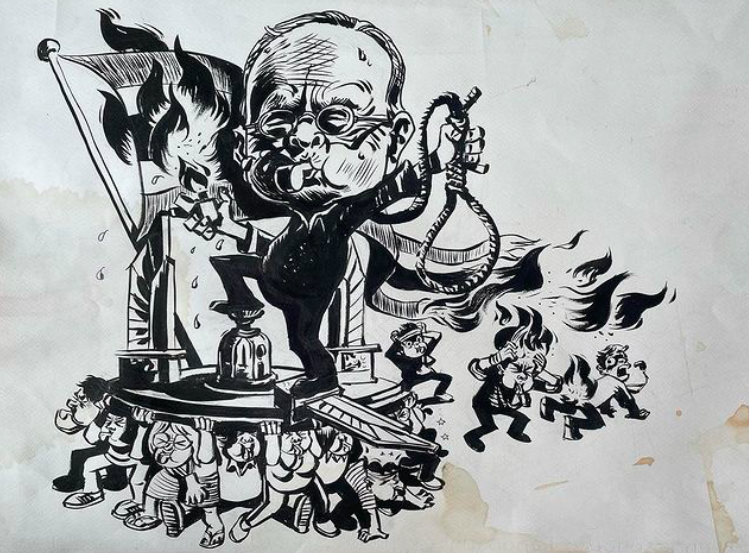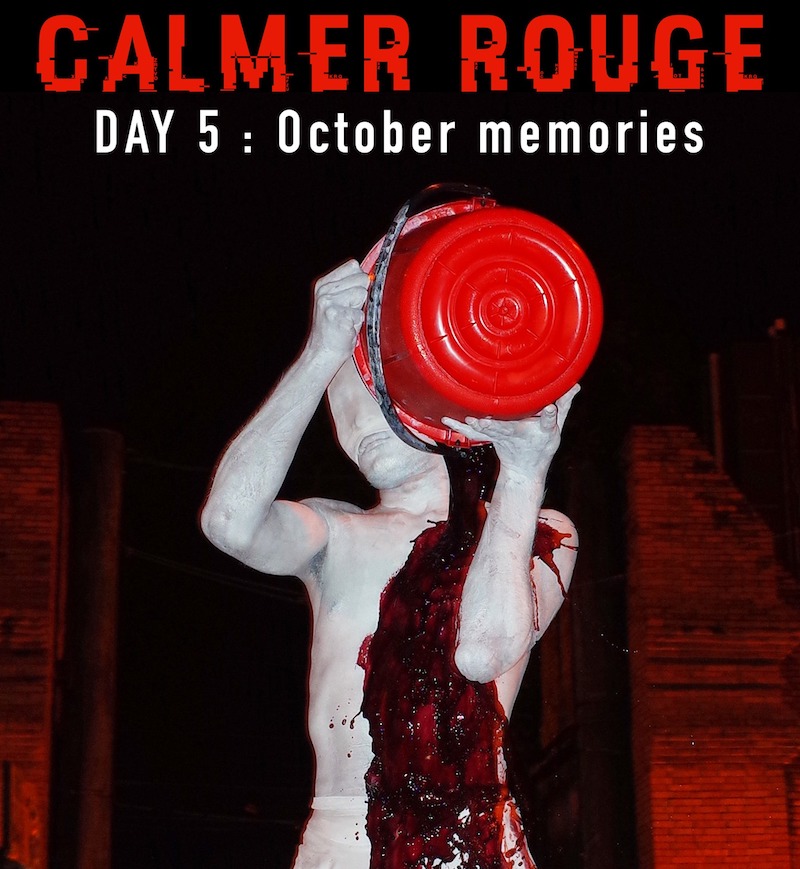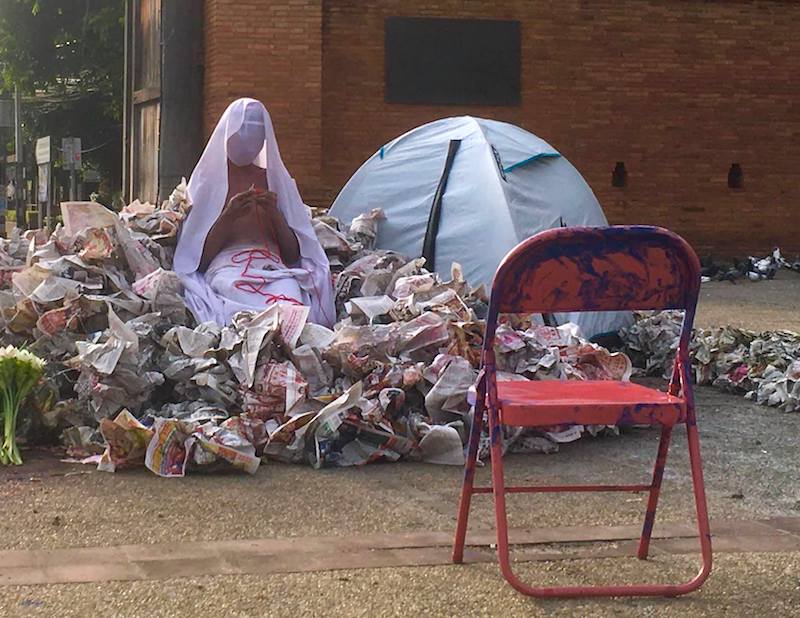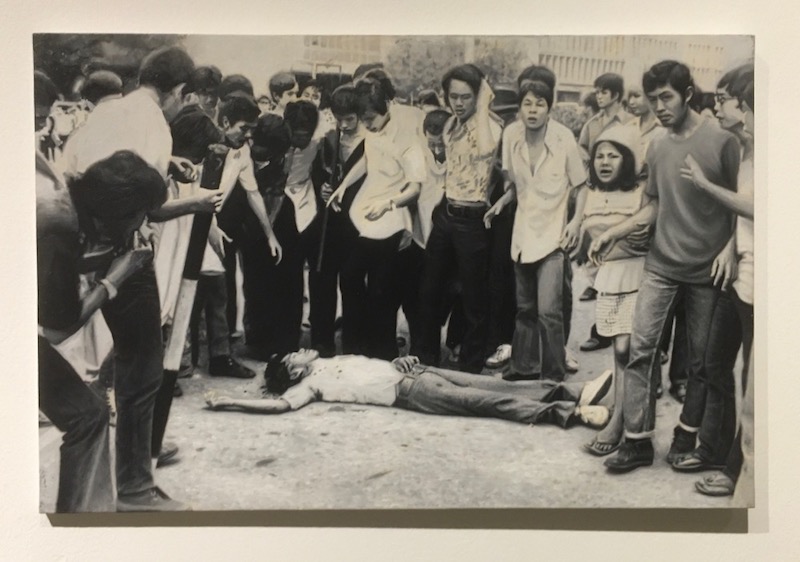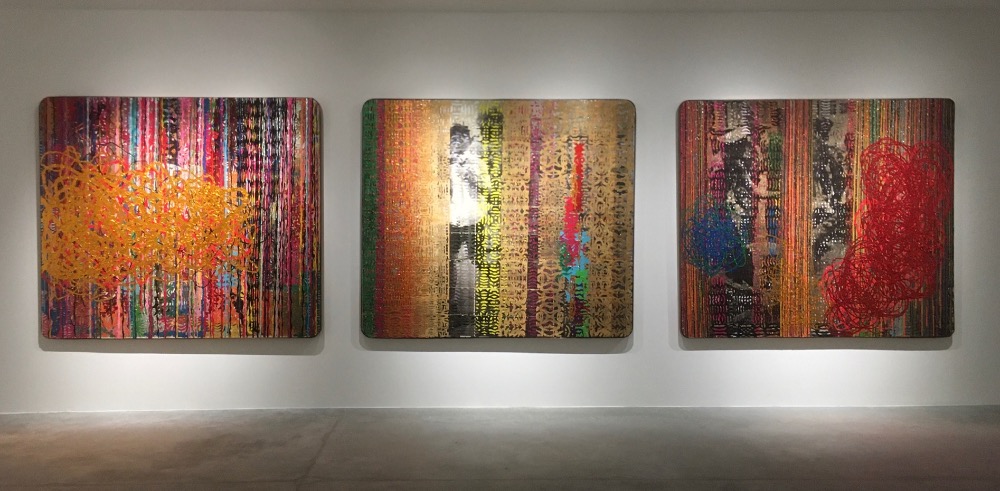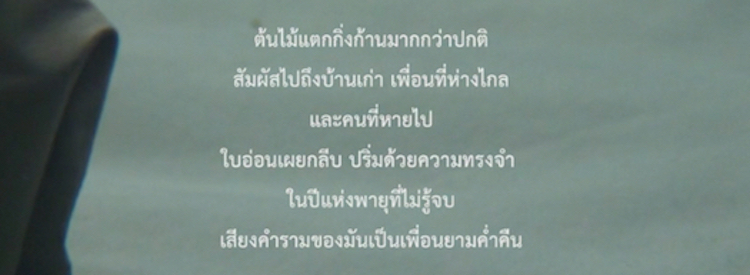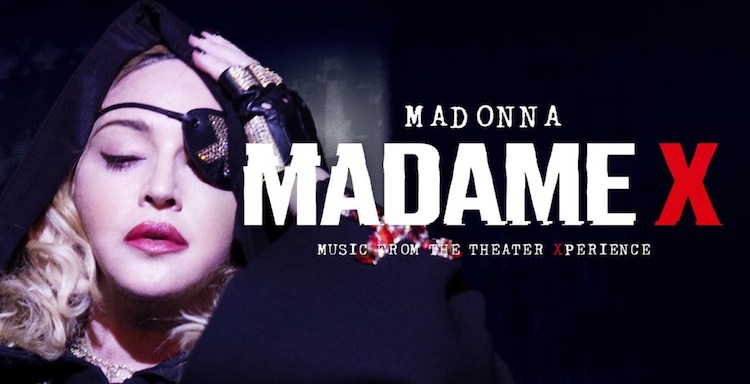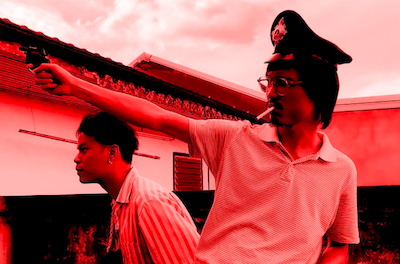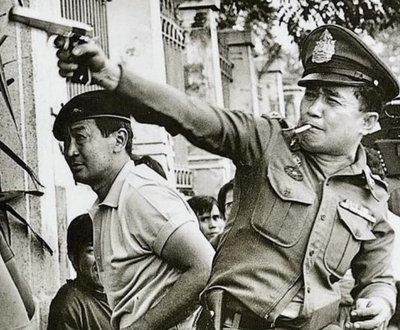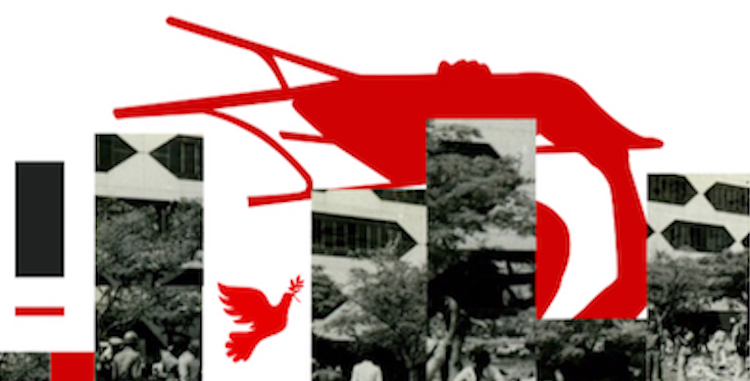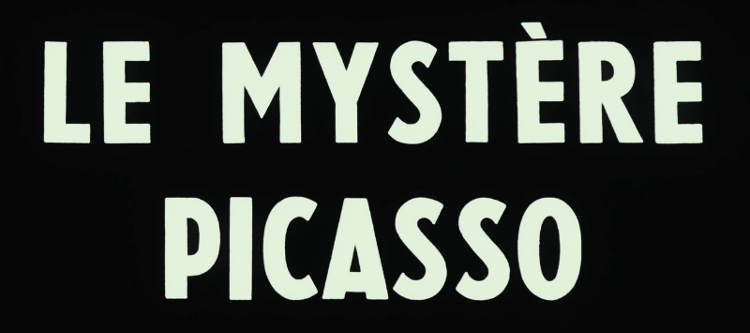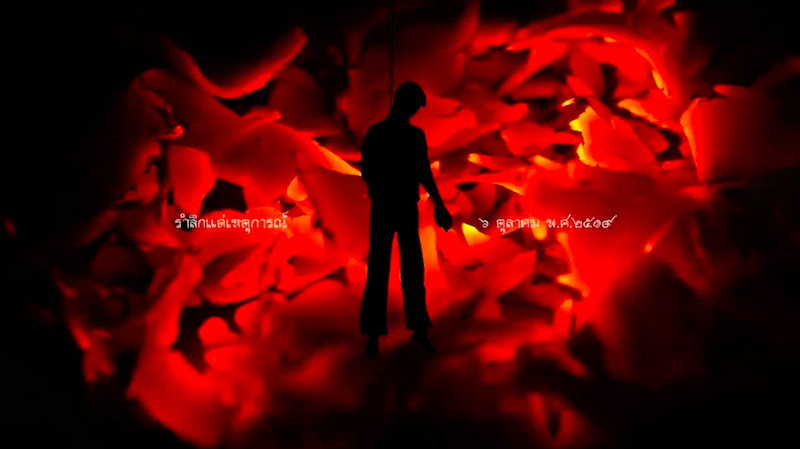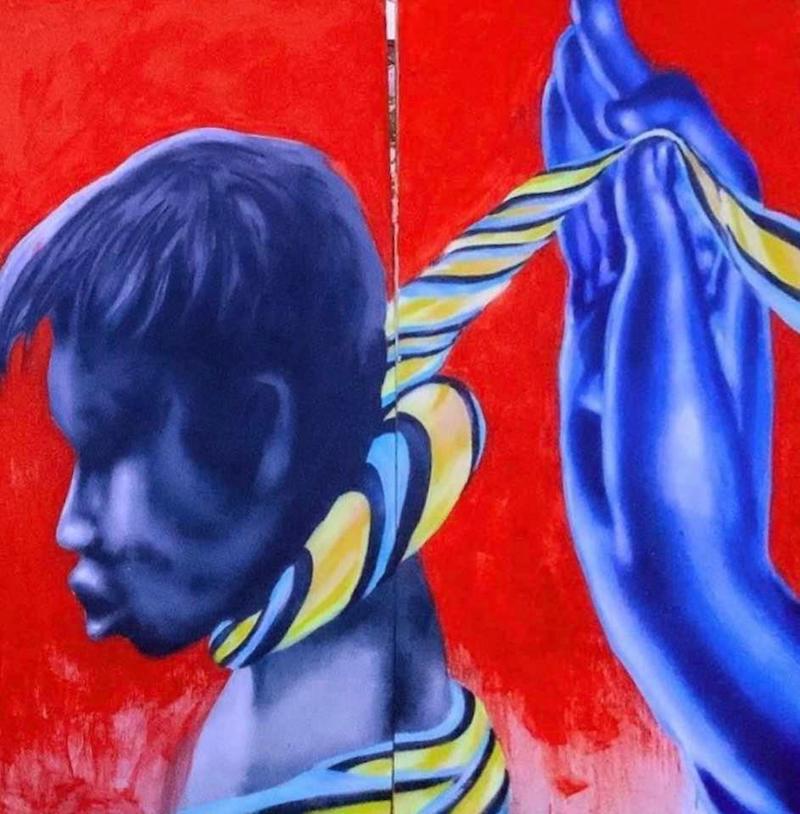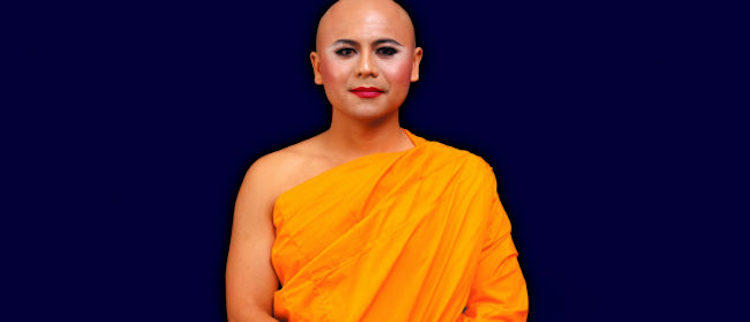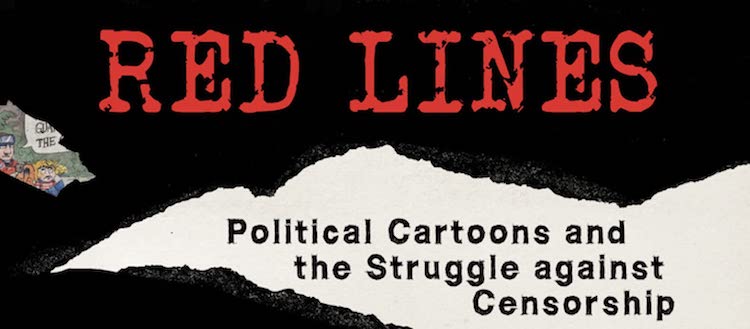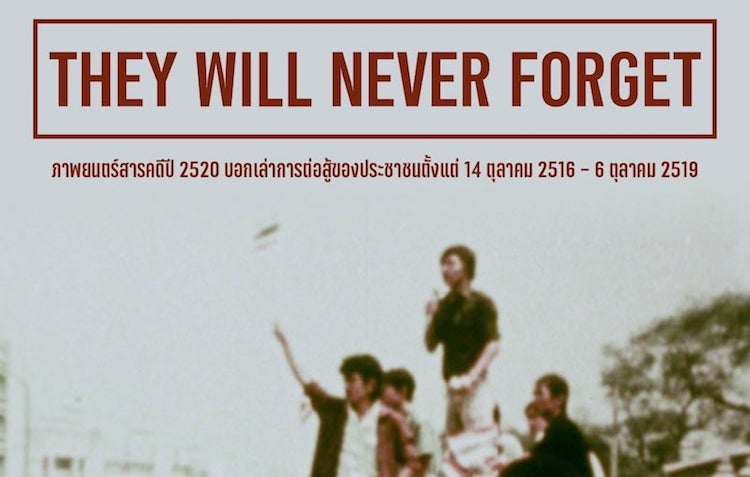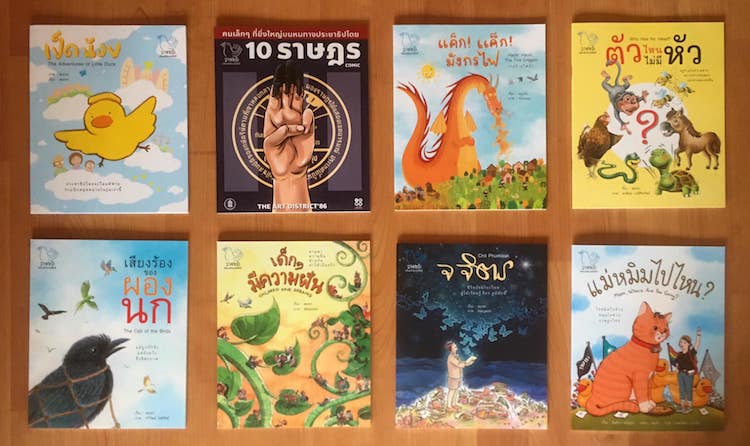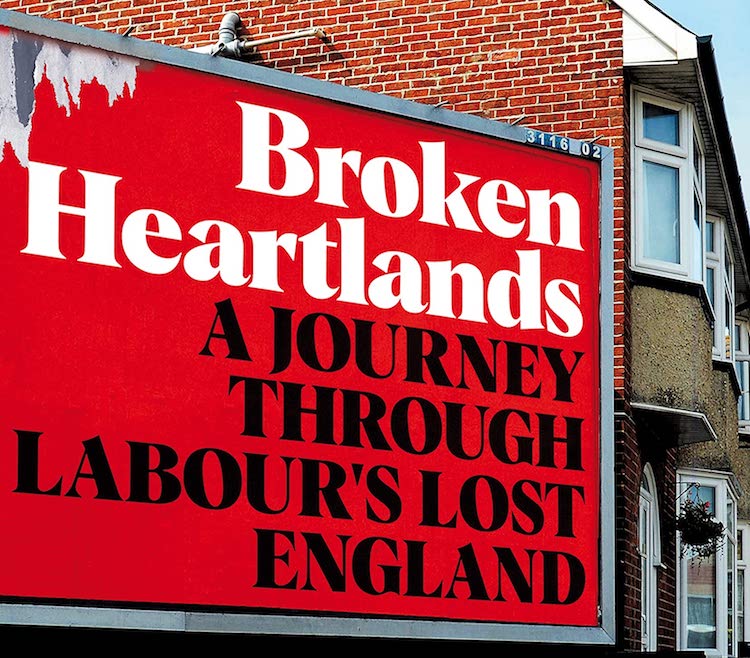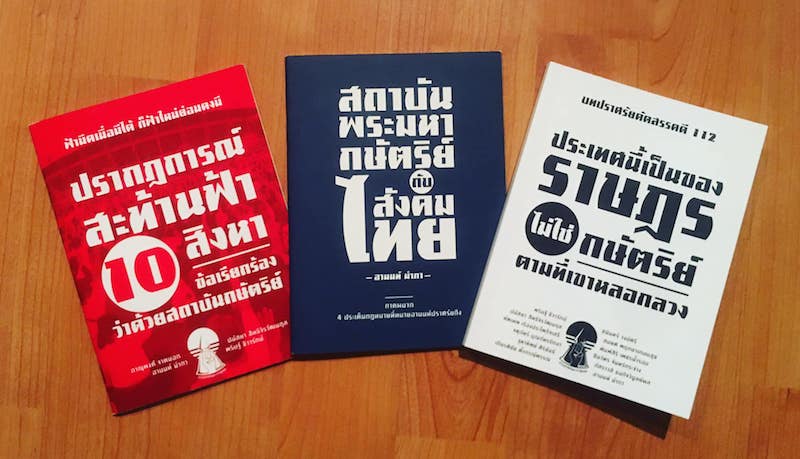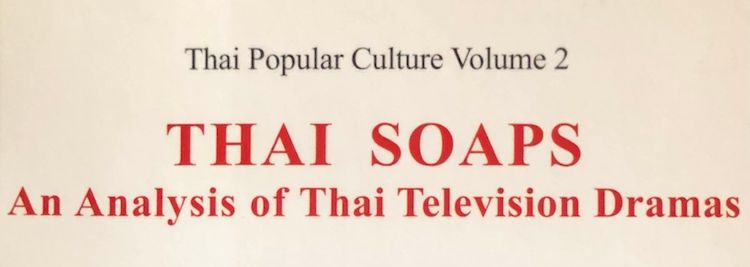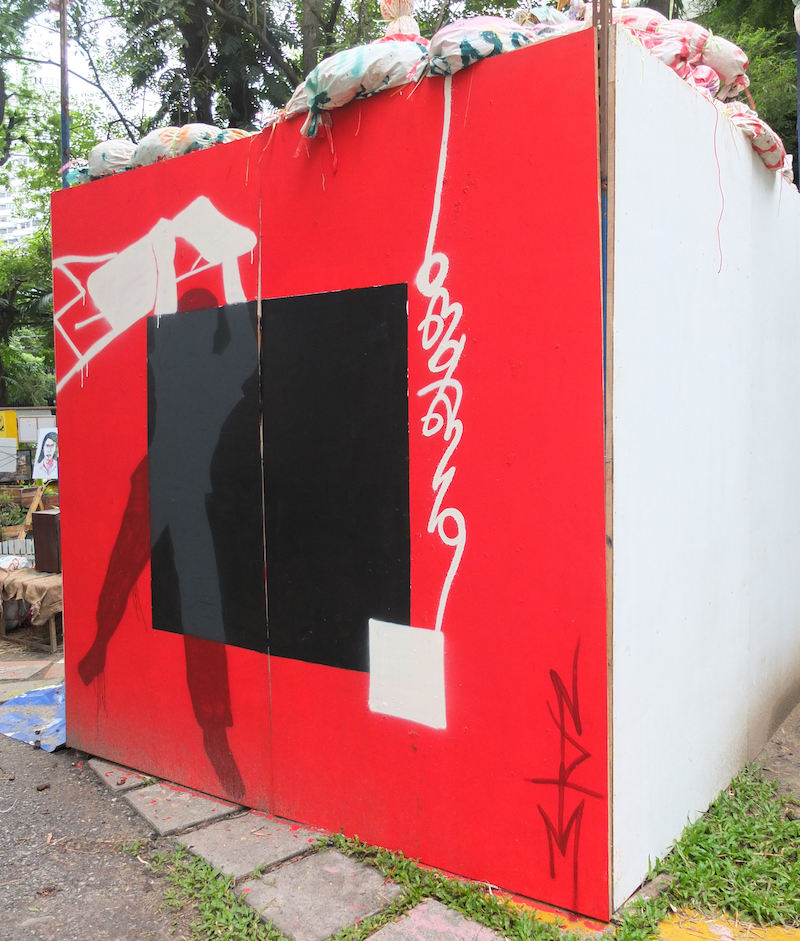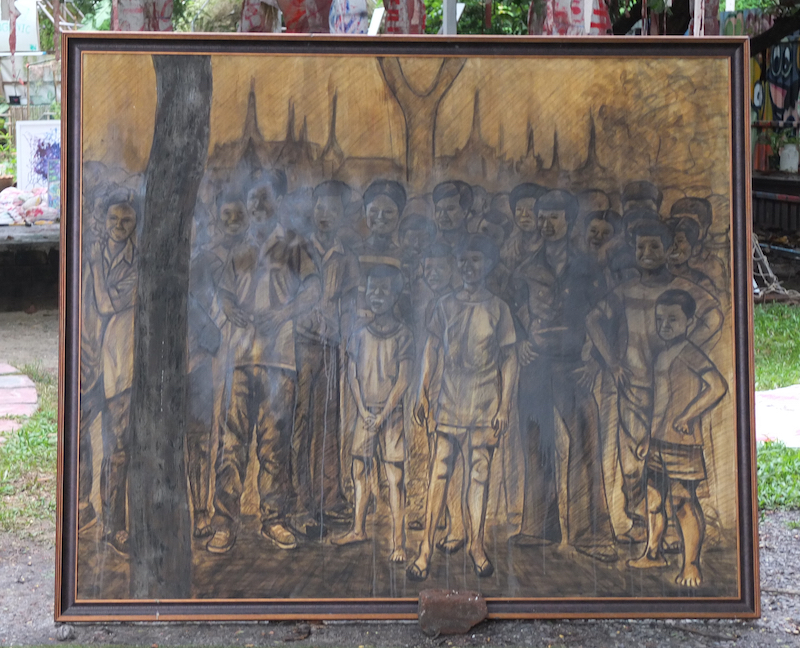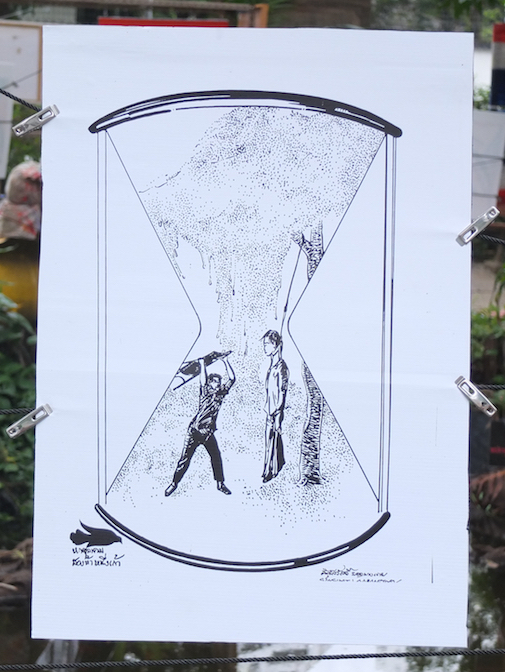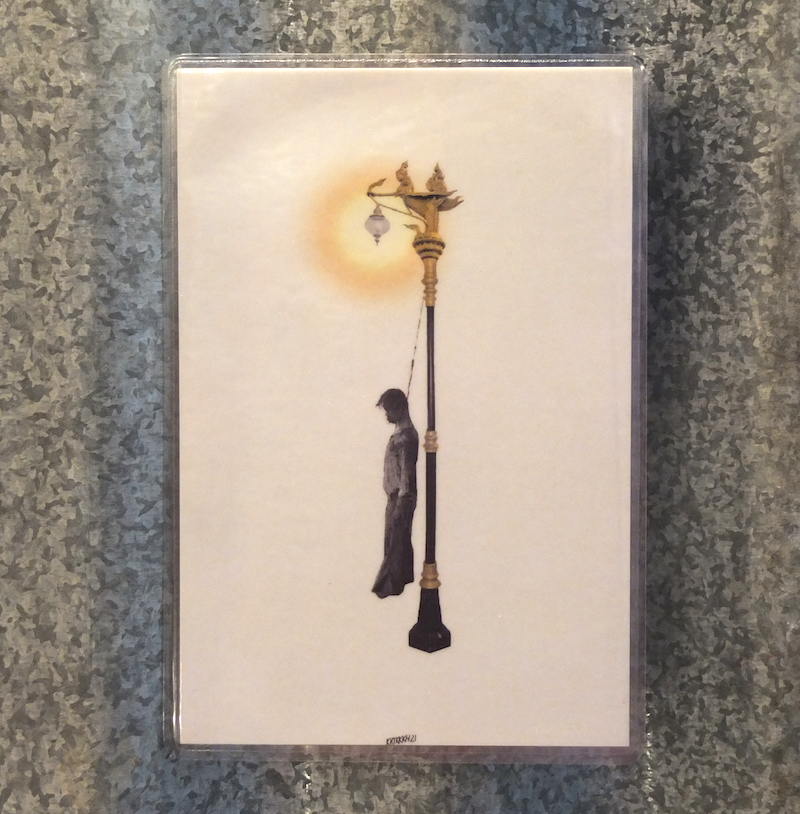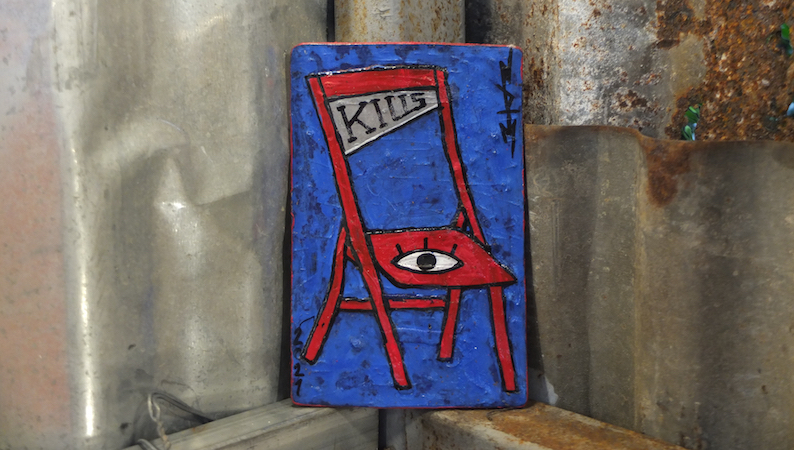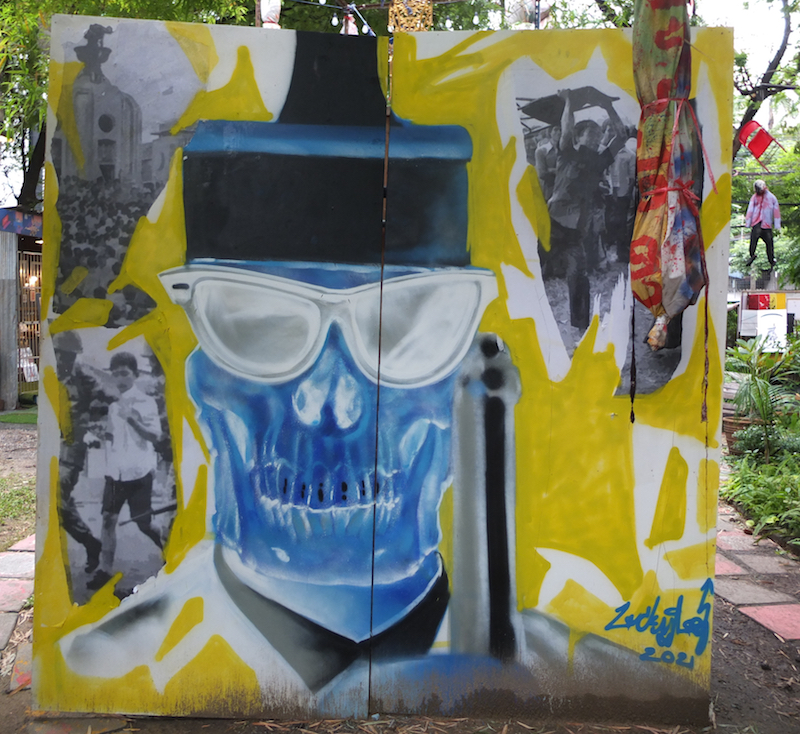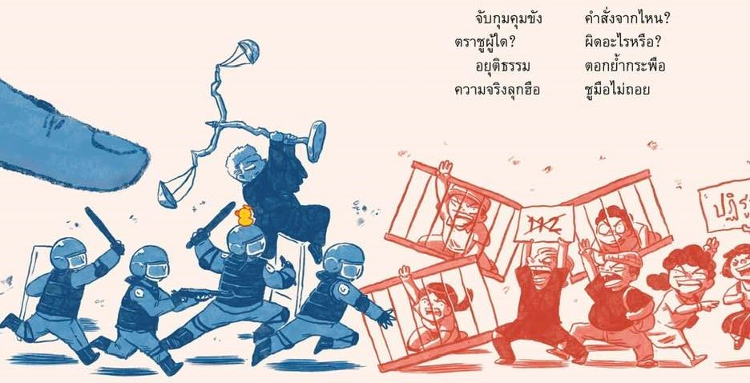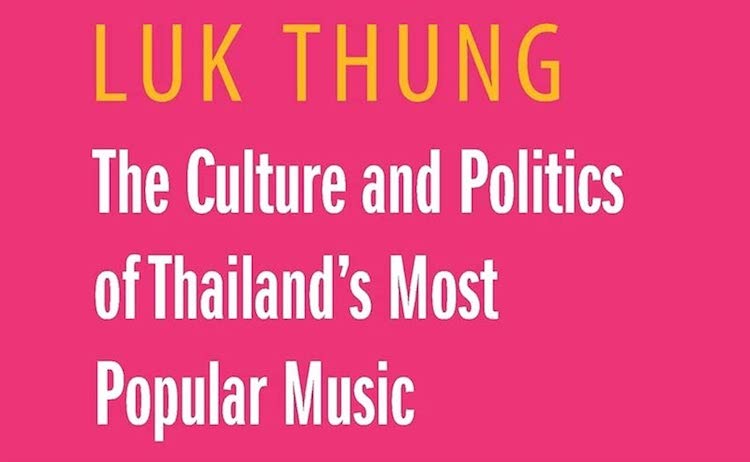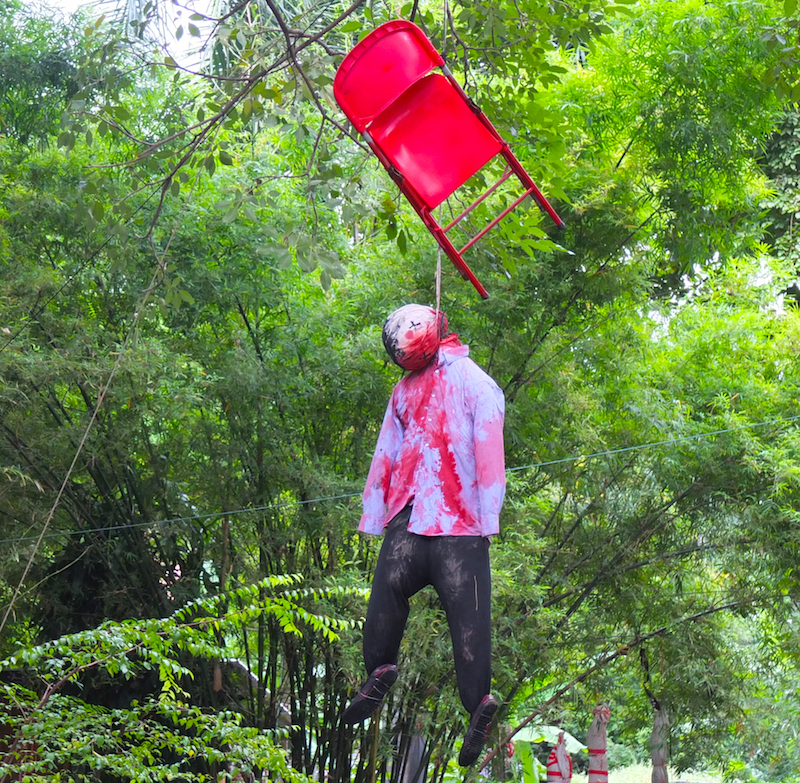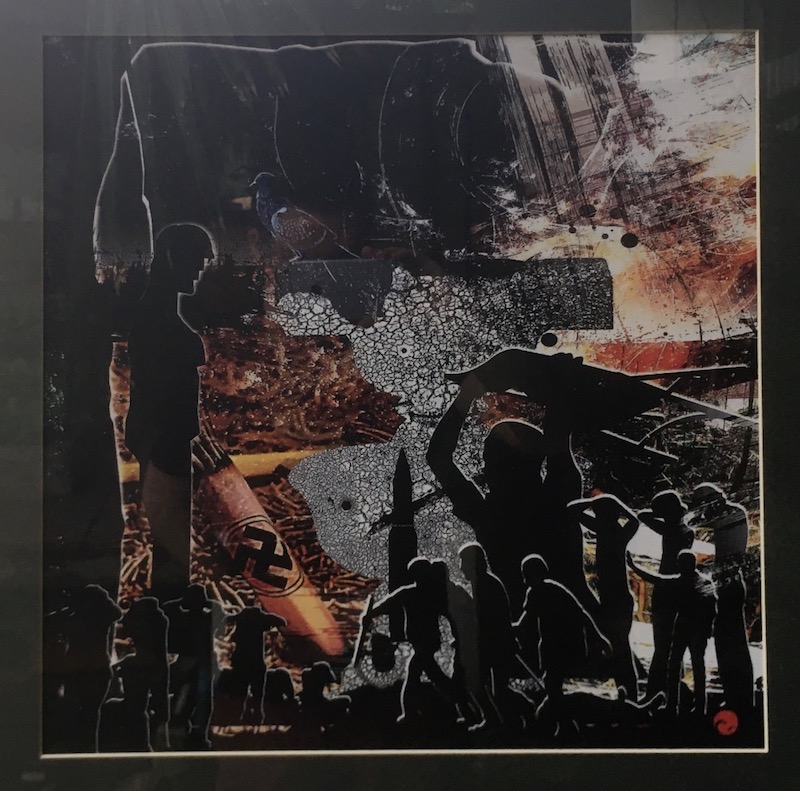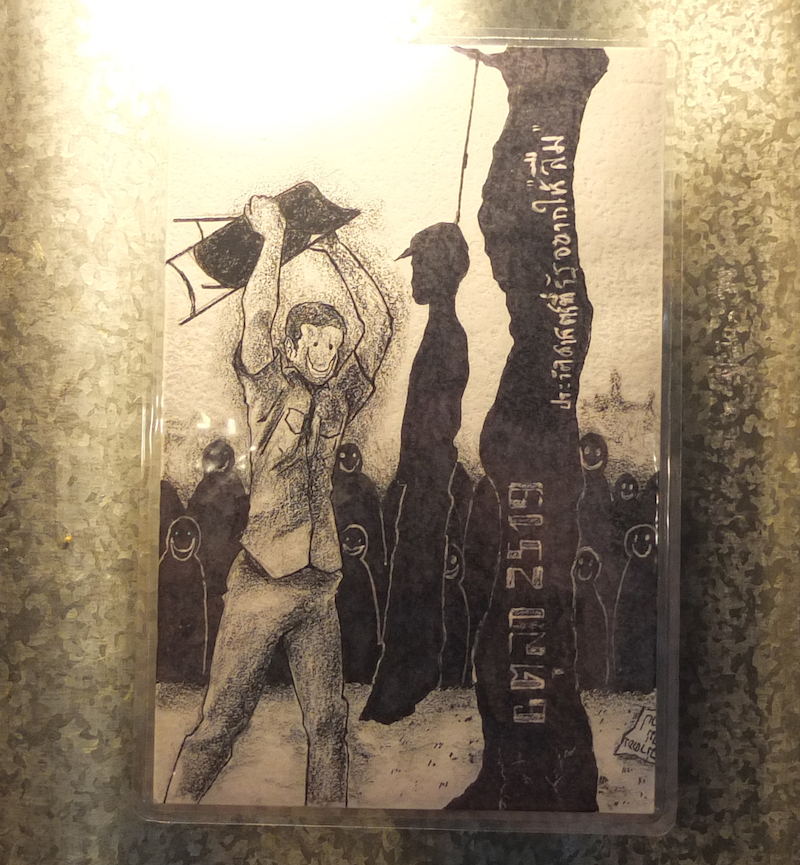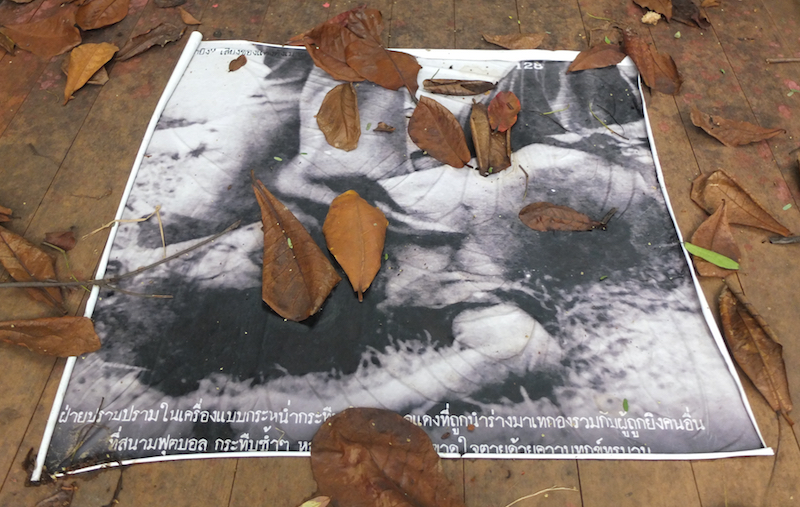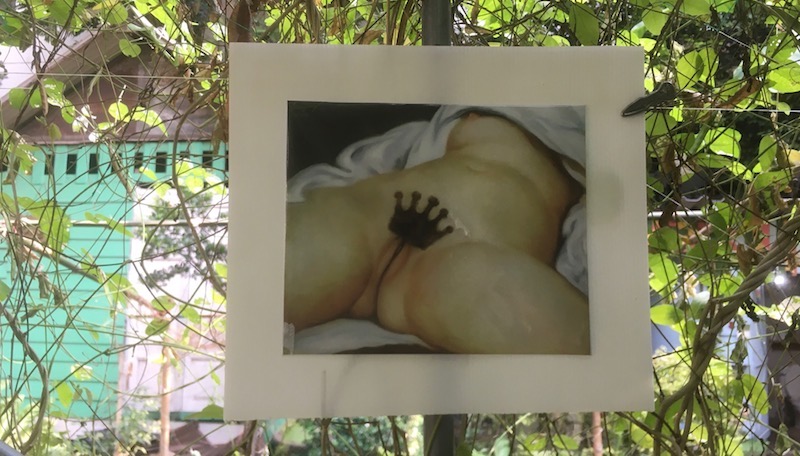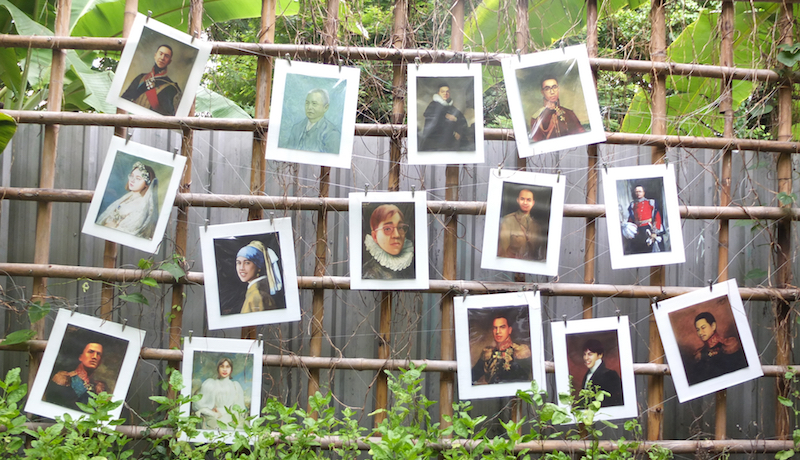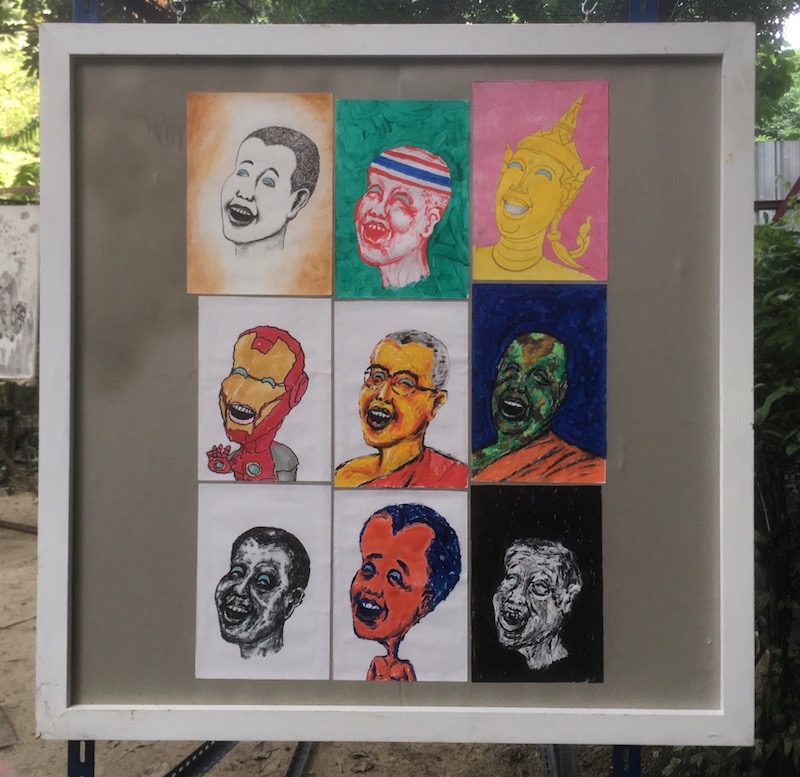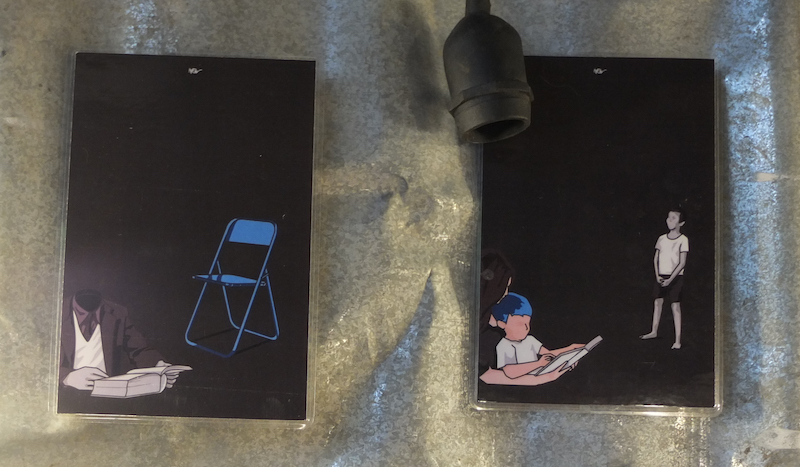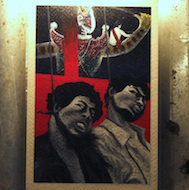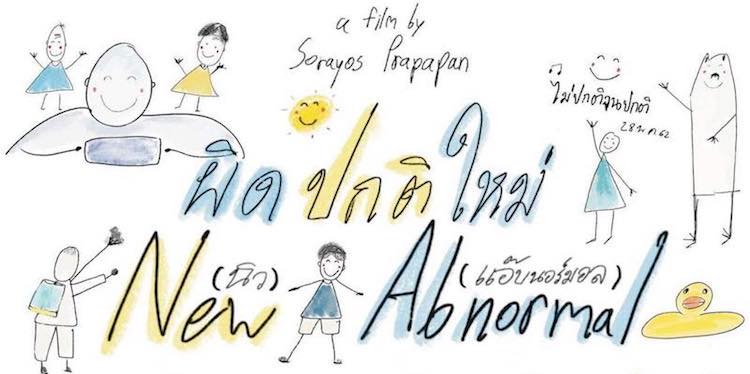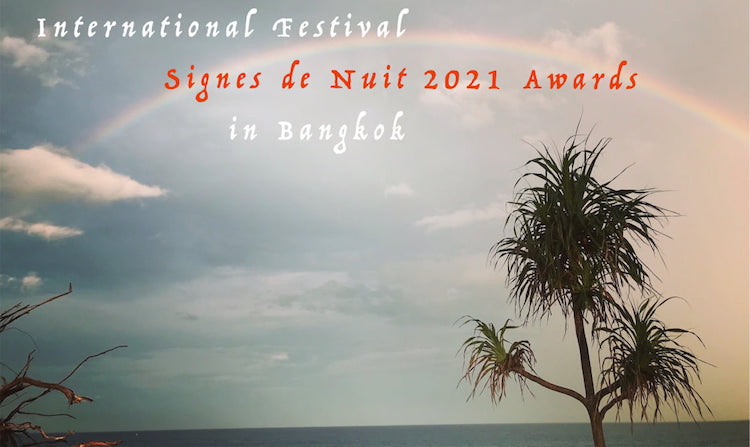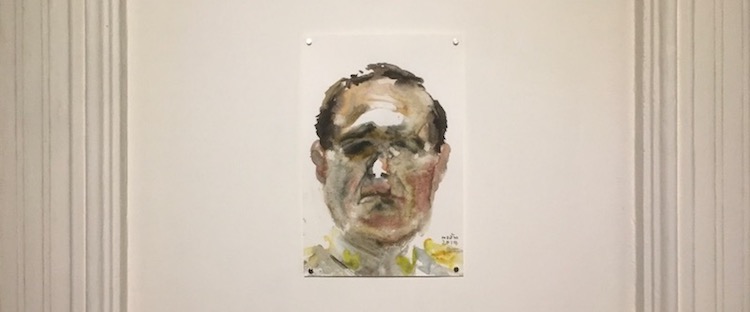
Tawan Wattuya’s new exhibition Keep in the Dark features watercolour portraits of pro-democracy protesters and campaigners who have been jailed or abducted, including Panusaya Sithjirawattanakul (Rung), Arnon Nampa (Lawyer Anon), and Porlajee Rakchongcharoen (Billy), among many others. The first work in the exhibition is a portrait of Prayut Chan-o-cha, titled I ____ Too: the missing word is ‘hear’, a pun on the protest chant “ai hia Tu”. (Ai hia is a suitably strong insult, and Tu is Prayut’s nickname.) The work that gives the exhibition its title, Keep in the Dark, shows the announcement of Prayut’s 2014 coup.
The lavish exhibition catalogue comes with three postcards, and includes an essay by curator Kritsada Duchsadeevanich outlining Thailand’s recurring political crisis: “Young people take to the streets demanding political transformation. Those in power use brute force to suppress the young protesters mercilessly.” Keep in the Dark opened on 14th October at Silpakorn University Art Centre in Bangkok, and runs until 27th November. Tawan’s previous exhibitions include Amnesia, which coincided with the publication of his monograph Works 2009–2019.
The lavish exhibition catalogue comes with three postcards, and includes an essay by curator Kritsada Duchsadeevanich outlining Thailand’s recurring political crisis: “Young people take to the streets demanding political transformation. Those in power use brute force to suppress the young protesters mercilessly.” Keep in the Dark opened on 14th October at Silpakorn University Art Centre in Bangkok, and runs until 27th November. Tawan’s previous exhibitions include Amnesia, which coincided with the publication of his monograph Works 2009–2019.

